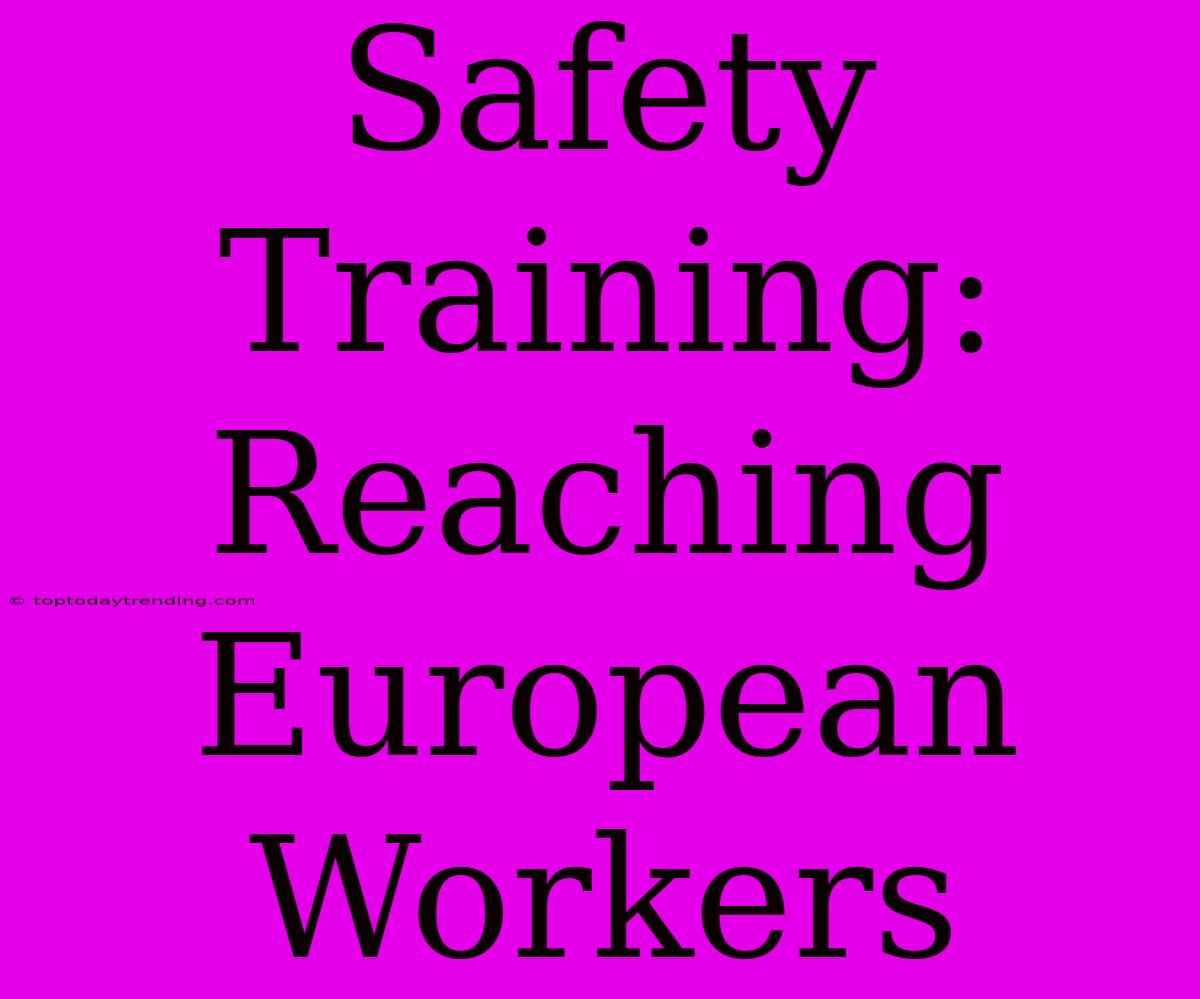Safety Training: Reaching European Workers
In today's globalized world, businesses are increasingly operating across borders. This expansion presents a unique challenge – ensuring that all employees, regardless of their location, are adequately trained on safety procedures. This is particularly crucial in Europe, where stringent regulations and a diverse workforce necessitate a tailored approach to safety training.
Why Safety Training Matters in Europe
The European Union (EU) has established a comprehensive framework for workplace safety and health, outlining strict regulations and standards for various industries. Adhering to these guidelines is not just a legal requirement but also a moral obligation to protect workers' well-being.
Here's why safety training is paramount in Europe:
- Legal compliance: Failure to provide proper safety training can result in hefty fines and legal repercussions.
- Reduced workplace accidents: Well-trained employees are more aware of hazards and equipped to prevent accidents, contributing to a safer work environment.
- Enhanced productivity: A safe workplace fosters a sense of security and trust, ultimately leading to increased employee morale and productivity.
- Positive public image: Demonstrating a commitment to worker safety strengthens your company's reputation and fosters positive relationships with stakeholders.
The Challenges of Reaching European Workers
Despite the importance of safety training, reaching all European workers can be challenging due to several factors:
- Language barriers: Europe is home to a diverse range of languages, making it difficult to create training materials accessible to everyone.
- Cultural differences: Different cultures have varying approaches to safety and risk assessment, requiring training programs to be culturally sensitive.
- Geographical distribution: Workers may be located in different countries, requiring logistical planning and resource allocation for effective training delivery.
- Varied industry sectors: Each industry has its own specific safety protocols, demanding customized training programs to address diverse needs.
Effective Strategies for Reaching European Workers
Overcoming these challenges necessitates innovative and tailored strategies:
1. Language Localization:
- Translation Services: Translate training materials into relevant languages using professional translation services to maintain accuracy and cultural sensitivity.
- Multilingual Platforms: Utilize e-learning platforms that support multiple languages, allowing employees to access training materials in their preferred language.
- Visual aids: Incorporate visual aids such as infographics, videos, and interactive simulations to make training comprehensible across language barriers.
2. Cultural Adaptation:
- Cultural Sensitivity Training: Train instructors on cultural nuances and best practices for delivering training effectively to diverse audiences.
- Regional Expertise: Partner with local safety professionals who understand the specific cultural context and regulations of each region.
- Employee Feedback: Encourage feedback from employees to ensure that training programs are relevant and culturally appropriate.
3. Delivery Options:
- Online Learning: Leverage online platforms to offer flexible and accessible training solutions, allowing employees to learn at their own pace and location.
- Blended Learning: Combine online modules with in-person workshops or simulations to provide a comprehensive learning experience.
- Mobile Training: Utilize mobile apps to deliver bite-sized training modules, making safety information readily available to employees on the go.
4. Industry-Specific Training:
- Customized Programs: Develop training programs tailored to the specific risks and hazards associated with each industry sector.
- Industry Experts: Engage experts from specific industries to provide targeted training on relevant safety protocols and procedures.
- Case Studies and Simulations: Utilize realistic case studies and simulations to enhance practical learning and equip employees to handle real-world scenarios.
Conclusion
Safety training is a crucial investment that benefits both employees and businesses. By implementing effective strategies that address language barriers, cultural differences, and industry-specific needs, businesses can effectively reach European workers and create a safer and more productive work environment. Remember, investing in safety training is not just a legal obligation but a vital step towards building a sustainable and thriving business in Europe.

